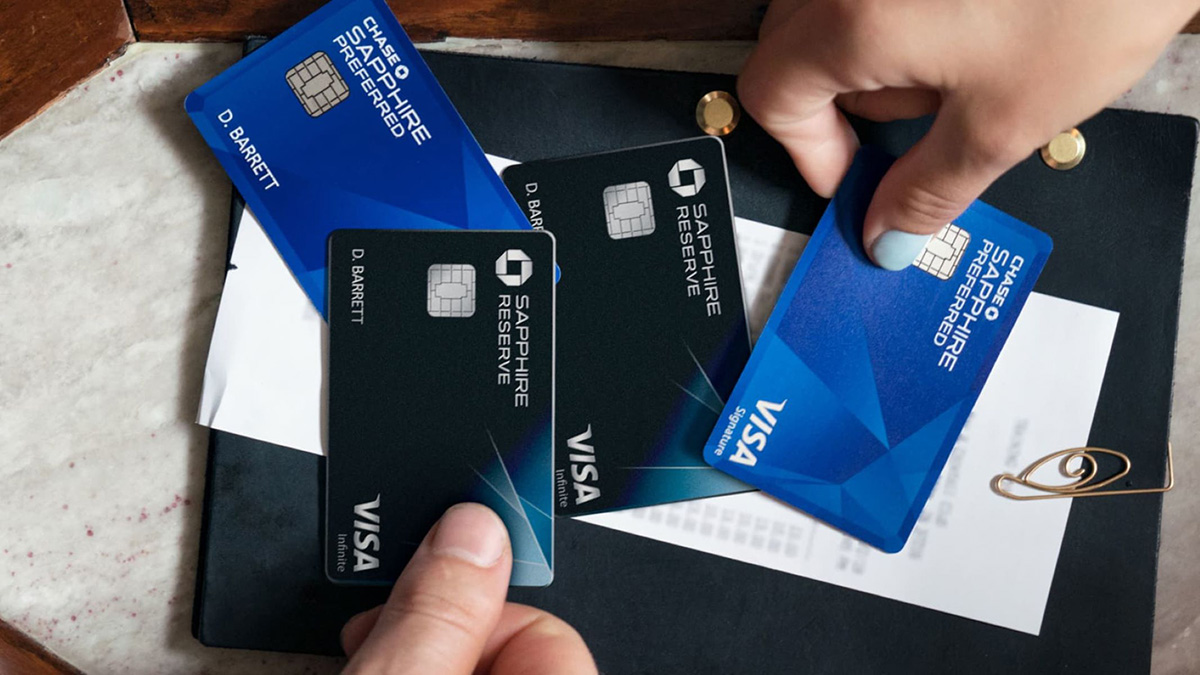

Finance
How To Find Savings Bonds In My Name
Modified: February 21, 2024
Discover how to locate savings bonds in your name and manage your finances effectively with our comprehensive finance guide.
(Many of the links in this article redirect to a specific reviewed product. Your purchase of these products through affiliate links helps to generate commission for LiveWell, at no extra cost. Learn more)
Table of Contents
- Introduction
- Understanding Savings Bonds
- Why You Might Have Savings Bonds in Your Name
- Steps to Find Savings Bonds in Your Name
- Contacting the U.S. Department of the Treasury
- Finding Unclaimed Savings Bonds Online
- Using the Treasury Hunt Tool
- Checking with the State Treasury Department
- Consulting with Financial Institutions
- Conclusion
Introduction
Savings bonds are a popular and secure investment option that many individuals take advantage of to grow their wealth. However, it’s not uncommon for people to forget about or lose track of the savings bonds they own. If you find yourself wondering how to find savings bonds in your name, you’re not alone. In this article, we will guide you through the process of locating your savings bonds and ensuring that you claim the funds they hold.
Understanding savings bonds is crucial before diving into the search process. These bonds are issued by the U.S. Department of the Treasury as a means for the government to borrow money from individuals. In return, bondholders earn interest on their investment over time. Savings bonds come in various types, including Series EE, Series I, and Series HH.
There are several reasons why you might have savings bonds in your name. Perhaps you received them as a gift for a special occasion such as a birthday or graduation, or maybe you purchased them yourself for future financial security. Whatever the case may be, it’s important to locate and manage your savings bonds to ensure that you are taking full advantage of the benefits they offer.
Now that you understand the significance of locating your savings bonds, let’s explore the steps you can take to find them.
Understanding Savings Bonds
Savings bonds are a type of investment issued by the U.S. Department of the Treasury. They are considered a safe and low-risk investment option, suitable for individuals who want to save money over a longer period of time. Savings bonds provide a fixed rate of return, which means you know exactly how much interest you will earn over the bond’s term.
There are several types of savings bonds available, including Series EE, Series I, and Series HH bonds. Each type has its own features and benefits.
Series EE bonds are the most common type of savings bond. They are purchased at a discount to their face value and accrue interest over a fixed period of time, usually 20 years. These bonds can be redeemed at any time after the first year, but it is generally recommended to hold them until they reach maturity to maximize the interest earned.
Series I bonds are designed to protect against inflation. They offer a combination of a fixed interest rate and an inflation-adjusted interest rate. The interest rate on Series I bonds is adjusted every six months based on changes in the Consumer Price Index (CPI). These bonds have a 30-year maturity period.
Series HH bonds are no longer available for purchase, but individuals who own them can continue to hold and redeem them. These bonds pay interest every six months and have a maturity period of 20 years.
One of the key advantages of savings bonds is their tax benefits. The interest earned on savings bonds is generally exempt from state and local taxes. Additionally, if the savings bonds are used for qualified education expenses, the interest may also be exempt from federal income tax.
It’s important to note that savings bonds can be purchased in various denominations, ranging from as low as $25 to as high as $10,000. They can be bought directly from the U.S. Department of the Treasury website or through financial institutions such as banks and credit unions.
Now that you have a better understanding of savings bonds, let’s explore why you might have savings bonds in your name.
Why You Might Have Savings Bonds in Your Name
There are several reasons why you might have savings bonds in your name. Here are a few common scenarios:
- Gifts: Savings bonds are often given as gifts for special occasions such as birthdays, graduations, or weddings. Relatives, friends, or even employers may have purchased savings bonds in your name to help you with future financial endeavors.
- Purchases: You might have purchased savings bonds yourself as a way to save money and earn interest over time. Savings bonds can be a smart investment strategy for individuals who want a safe and low-risk option to grow their wealth.
- Inheritance: If you’ve inherited assets or funds from a loved one, it’s possible that savings bonds were included in the inheritance. It’s not uncommon for individuals to pass down savings bonds as part of their estate planning.
- Work-related: In some cases, employers may have issued savings bonds to employees as part of a rewards program or retirement benefits package. If you have changed jobs or retired, you may need to locate any savings bonds that were issued to you.
- Forgotten: It’s easy to forget about savings bonds, especially if they were received a long time ago. Life gets busy, and important financial documents can sometimes get misplaced or overlooked. It’s important to actively search for any potential savings bonds in your name.
Regardless of the reason why you might have savings bonds in your name, it’s crucial to locate and manage them properly. By doing so, you can ensure that your investment is working for you and that you are taking advantage of the benefits they offer. In the next section, we will discuss the steps you can take to find savings bonds in your name.
Steps to Find Savings Bonds in Your Name
If you suspect or have reason to believe that you have savings bonds in your name, but are unsure of their whereabouts, you can follow these steps to locate and reclaim them:
- Contacting the U.S. Department of the Treasury: The first step is to reach out directly to the U.S. Department of the Treasury. They have resources and tools to help you locate any savings bonds registered in your name. You can contact them through their website or by phone to inquire about your savings bond holdings.
- Finding unclaimed savings bonds online: The U.S. Department of the Treasury provides an online tool called Treasury Hunt that enables you to search for unclaimed savings bonds. This tool allows you to enter your personal information and search their database for any bonds registered in your name that may have been forgotten or lost.
- Checking with the State Treasury Department: In addition to the U.S. Department of the Treasury, you can also check with your state’s Treasury Department. Some states maintain databases of unclaimed property, including savings bonds. By searching these databases, you can potentially locate any unclaimed savings bonds that have been turned over to the state.
- Consulting with financial institutions: If you have any record of purchasing savings bonds through a financial institution, such as a bank or credit union, it’s worth reaching out to them to inquire about any bonds that may be registered in your name. They may have records of your transactions and can provide you with information on any savings bonds associated with your account.
It’s important to be prepared when contacting the respective entities mentioned above. Have any relevant personal information, such as your Social Security number or bond serial numbers, readily available. This will help facilitate the search process and ensure accurate results.
Remember, the process of finding savings bonds in your name may take some time and effort. It’s not uncommon for forgotten or lost bonds to exist, and patience is key when conducting your search. By following these steps and diligently pursuing the search for your savings bonds, you increase the chances of reclaiming any funds that are rightfully yours.
Now let’s explore the specific methods and tools you can use to aid in your search for savings bonds.
Contacting the U.S. Department of the Treasury
One of the primary steps in finding savings bonds in your name is to contact the U.S. Department of the Treasury. They have resources and tools specifically designed to assist individuals in locating their savings bonds. Here’s how you can get in touch with them:
1. Visit the U.S. Department of the Treasury website: Start by visiting the official website of the U.S. Department of the Treasury. There, you can find valuable information and resources related to savings bonds. Look for the section specifically dedicated to bond holders or individuals searching for lost bonds.
2. Utilize the Treasury’s online resources: The U.S. Department of the Treasury provides a variety of online resources and tools to aid in your search for savings bonds. One such tool is the Treasury Direct website, where you can access your account, review bond information, and manage your holdings. By logging in or creating an account, you can view any bonds registered in your name and access relevant details.
3. Contact the Bureau of the Fiscal Service: If you’re unable to locate your savings bonds through online resources, reaching out directly to the Bureau of the Fiscal Service can be beneficial. They are responsible for managing the Treasury’s savings bond programs and can provide assistance in locating your bonds. Contact information for the Bureau of the Fiscal Service can be found on the U.S. Department of the Treasury’s website.
4. Gather relevant information: Before contacting the U.S. Department of the Treasury, gather any relevant information you have regarding your savings bonds. This may include the bond serial numbers, issue dates, or any other details you recall. The more information you can provide, the easier it will be for the Treasury to assist you in your search.
5. Communicate your inquiry: Once you have gathered the necessary information, it’s time to communicate your inquiry to the U.S. Department of the Treasury. This can be done through their online contact form, email, or phone. Clearly explain your situation and provide all relevant details to help expedite the process and ensure accurate results.
By contacting the U.S. Department of the Treasury and utilizing their resources, you can increase the likelihood of finding any savings bonds registered in your name. Stay patient and persistent throughout the process, as it may take time to receive a response or locate your bonds. In the next section, we will explore another helpful tool for finding unclaimed savings bonds: the Treasury Hunt.
Finding Unclaimed Savings Bonds Online
If you suspect that you have unclaimed savings bonds in your name, one of the most effective methods to uncover them is by utilizing the U.S. Department of the Treasury’s online tool called Treasury Hunt. This tool is designed specifically to help individuals search for and reclaim their lost or forgotten savings bonds. Here’s how you can use it:
1. Visit the Treasury Hunt website: Start by visiting the official Treasury Hunt website, which can be easily accessed through the U.S. Department of the Treasury’s website. This tool is free to use and available to anyone looking for unclaimed savings bonds.
2. Provide your personal information: To begin your search, you will need to provide certain personal information, including your Social Security number. This ensures that the Treasury Hunt tool can accurately match your details against their database of unclaimed savings bonds.
3. Complete the search: Once you have entered your personal information, initiate the search process. The Treasury Hunt tool will then search its database to identify any unclaimed savings bonds registered in your name. Depending on the availability of information and the complexity of your search, the process may take some time.
4. Review the results: After completing the search, the Treasury Hunt tool will provide you with a list of any potential unclaimed savings bonds associated with your name. The results will include details such as the bond series, issue date, and face value. Take note of these details, as they will be crucial for further verification and claiming the bonds.
5. Follow the instructions: If the Treasury Hunt tool identifies any potential unclaimed savings bonds, carefully review the instructions provided. The instructions will outline the steps you need to take to verify your ownership and claim the bonds. This may involve submitting specific documentation or contacting the appropriate authorities to complete the process.
6. Repeat periodically: Even if the initial search through Treasury Hunt does not yield any unclaimed savings bonds in your name, it’s a good practice to repeat the search periodically. New bonds may be added to the database over time, or additional information may become available that could help in locating your bonds.
Utilizing the Treasury Hunt tool is a convenient and efficient way to search for unclaimed savings bonds online. It streamlines the process and increases the chances of locating bonds that may have been forgotten or lost. However, it’s important to note that not all savings bonds may be included in the database. Therefore, it’s advisable to explore other avenues as well, such as checking with the State Treasury Department.
In the next section, we will delve into the process of checking with the State Treasury Department in your respective state to aid in finding savings bonds in your name.
Using the Treasury Hunt Tool
The Treasury Hunt tool, offered by the U.S. Department of the Treasury, is a valuable resource that can help you in your search for unclaimed savings bonds. This online tool is user-friendly and allows you to search their database for any bonds registered in your name that may have been forgotten or lost. Here’s how you can effectively use the Treasury Hunt tool:
1. Access the Treasury Hunt website: Begin by visiting the official Treasury Hunt website, which can be accessed through the U.S. Department of the Treasury’s website. This tool is free to use and available to anyone looking for unclaimed savings bonds.
2. Enter your personal information: To initiate the search, you will need to provide certain personal information, including your Social Security number. This information is crucial to accurately match your details against the Treasury’s database and identify any unclaimed savings bonds in your name.
3. Complete the search process: Once you have entered the required personal information, proceed with the search process. The Treasury Hunt tool will now scan its database to identify any potential unclaimed savings bonds associated with your details. It may take some time, depending on the availability and complexity of the information.
4. Review the search results: After the search is complete, the Treasury Hunt tool will provide you with a list of any potential unclaimed savings bonds linked to your name. The search results will include essential details such as the bond series, issue date, and face value. Carefully review this information and jot down the necessary details for future reference.
5. Follow the provided instructions: If the Treasury Hunt tool detects any potential unclaimed savings bonds, carefully follow the provided instructions. These instructions will outline the steps you need to take to further verify your ownership and claim the bonds. It may involve submitting specific documentation or contacting the appropriate authorities for the necessary procedures.
6. Periodically repeat the search: Even if the first search through the Treasury Hunt tool fails to identify any unclaimed savings bonds in your name, it’s advisable to periodically repeat the search. New bonds may be added to the Treasury’s database over time, or additional information may become available that could help locate your bonds.
The Treasury Hunt tool is a convenient and efficient means to search for unclaimed savings bonds online. It enhances the chances of finding bonds that may have been forgotten or lost. However, it’s essential to note that not all savings bonds may be included in the database. Therefore, it’s recommended to explore other avenues as well, such as checking with the State Treasury Department in your respective state.
In the next section, we will discuss the process of checking with the State Treasury Department to aid in finding savings bonds in your name.
Checking with the State Treasury Department
In addition to utilizing the resources provided by the U.S. Department of the Treasury, another avenue to explore when searching for savings bonds in your name is to check with your state’s Treasury Department. Many states maintain databases of unclaimed property, which may include unclaimed savings bonds. Here’s how you can check with the State Treasury Department:
1. Identify your state’s Treasury Department: Start by determining the specific department or agency within your state government that handles unclaimed property. This may vary from state to state, but it is typically the State Treasury Department or the State Controller’s Office. Visit the official website of your state government to find the relevant department’s contact information.
2. Visit the state’s unclaimed property website: Most states have an official website dedicated to unclaimed property where you can search for any assets or funds that have been turned over to the state. Locate the unclaimed property section on your state’s official website and proceed with the search process.
3. Provide the required information: To search for unclaimed savings bonds in your name, you will typically need to provide certain personal information, such as your name, Social Security number, and other identifying details. Follow the instructions on the state’s website and fill out the necessary forms or online search tools accordingly.
4. Review the search results: Upon completing the search, the state’s unclaimed property website will provide you with a list of any potential unclaimed savings bonds associated with your name. Take note of the details provided, such as bond numbers, issue dates, or other identifying information. This will be crucial for further verification and the process of claiming the bonds.
5. Follow the instructions for claiming: If the search identifies any unclaimed savings bonds in your name, carefully review the instructions provided by the state’s Treasury Department. The instructions will outline the necessary steps you need to take to verify your ownership and claim the bonds. These steps may vary depending on the state’s specific procedures.
6. Repeat the search periodically: It’s advisable to periodically repeat the search with the State Treasury Department, as new unclaimed savings bonds may be added to their database over time. It’s also possible that additional information or updates could help in locating your bonds in the future.
Checking with the State Treasury Department can be a valuable step in your search for savings bonds in your name. It allows you to tap into the resources and databases specific to your state, increasing the chances of finding any unclaimed assets. However, always remember to explore other avenues as well, such as consulting with financial institutions or directly contacting the U.S. Department of the Treasury.
In the next section, we will discuss how consulting with financial institutions can assist you in finding savings bonds in your name.
Consulting with Financial Institutions
Another effective approach to finding savings bonds in your name is to consult with financial institutions. If you have any record of purchasing savings bonds through a bank, credit union, or other financial institution, they may have valuable information that can aid in your search. Here’s how you can go about consulting with financial institutions:
1. Gather relevant information: Before reaching out to financial institutions, gather any relevant information you have regarding your savings bonds. This may include bond certificates, statements, account numbers, or any other documentation associated with your savings bond transactions. Having this information readily available will help facilitate the process.
2. Contact your financial institution: Reach out to the financial institution that you believe may have information about your savings bonds. This can be the bank or credit union where you initially purchased the bonds or any other institution where you currently hold accounts. Contact their customer service department and explain your situation. Provide the relevant details and ask if they can assist you in locating any savings bonds registered in your name.
3. Inquire about records and accounts: When speaking with the customer service representative, inquire about any records or accounts associated with your savings bonds. Financial institutions typically keep detailed records of customers’ transactions and accounts, including savings bonds purchased through them. They may be able to provide you with information about your bonds, such as the bond numbers, issue dates, or current values.
4. Provide necessary documentation: If the financial institution confirms that they have records or accounts related to your savings bonds, they may request additional documentation to verify your ownership. Be prepared to provide any required identification documents, account numbers, or proof of purchase to expedite the process. The specific documentation they request may vary depending on the institution’s policies and procedures.
5. Follow their instructions for retrieval: Once you have provided the necessary documentation, follow the instructions provided by the financial institution to retrieve your savings bond information. They may guide you on the steps to access your account or provide you with the relevant bond details. This will assist you in tracking down any lost or forgotten savings bonds in your name.
6. Explore multiple financial institutions: If you have conducted transactions with multiple financial institutions over the years, it’s advisable to reach out to each of them individually. Different institutions may have different records or ways of tracking savings bonds, so checking with multiple sources increases your chances of uncovering any unclaimed bonds.
Consulting with financial institutions can be a fruitful step in your search for savings bonds. They can provide you with valuable information and records related to your savings bonds, aiding you in locating any misplaced or overlooked bonds. Remember to provide accurate and complete information to ensure accurate retrieval of your savings bond details.
In the next section, we will conclude our guide and recap the steps to finding savings bonds in your name.
Conclusion
Locating savings bonds in your name may seem like a daunting task, but with the right approach and resources, it is possible to uncover any forgotten or lost bonds. Here’s a recap of the steps you can take to find savings bonds in your name:
- Contact the U.S. Department of the Treasury and utilize their resources, such as the Treasury Direct website and the Bureau of the Fiscal Service, to inquire about your savings bond holdings.
- Use the Treasury Hunt tool provided by the U.S. Department of the Treasury to search for unclaimed savings bonds online.
- Check with your state’s Treasury Department or State Controller’s Office to search their databases of unclaimed property, including savings bonds.
- Consult with the financial institutions where you have conducted savings bond transactions, providing them with relevant documentation to retrieve bond information.
Throughout the process, it’s essential to be patient and persistent. Finding savings bonds in your name may take time and effort, but the potential rewards are worth it. Once you have located your savings bonds, take the necessary steps to verify your ownership and claim the funds they hold.
Remember to periodically repeat your search, as new information may become available or additional bonds may be added to databases over time. Stay organized and keep relevant documents and details in a safe place for future reference.
Locating and managing your savings bonds can not only help you maximize your investment, but it can also provide financial security and peace of mind. If you suspect that you have savings bonds in your name, don’t hesitate to begin your search using the steps outlined in this guide.
By being proactive and leveraging the available resources, you can uncover any unclaimed savings bonds and ensure that you are taking full advantage of the benefits they offer. So, start your search today and reclaim any funds that are rightfully yours.














